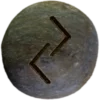Last Updated on October 28, 2024

Sigrblót, also known as Summer Finding or Sumarsdag, marks the transition from winter to summer in Asatru. This celebration honors the lengthening days and the return of warmth. For the ancient Norse, the shift to summer represented a vital time for survival. Winter, a season of hardship, gave way to new growth and opportunities for work, travel, and prosperity.
In modern Asatru, Sigrblót serves as a moment to give thanks to the gods, particularly Freyr. Freyr, a Vanir god associated with fertility, agriculture, and peace, is often honored for bringing abundance during the growing season. The focus of Sigrblót is on welcoming the sun’s return, planting crops, and preparing for the activities of the warmer months. People often perform rituals to ask for blessings, not only for the land but also for personal ventures.
One key theme during Sigrblót is victory. The name “Sigrblót” translates to “Victory Sacrifice,” and this holiday also acknowledges personal triumphs over the challenges of winter. As warriors sought victory in battle, Asatruar today seek success in their lives, whether through career, relationships, or spiritual growth. Offerings made during this time emphasize gratitude for past victories and hopes for future success.
Rituals, Practices, and Runes
Rituals during Sigrblót typically involve blóts (sacrifices) and sumbels (ritual toasts). These ceremonies honor deities like Freyr, Thor, and Odin. Freyr represents fertility and growth, while Thor offers protection for crops and homes. Odin, associated with wisdom, guides people as they plan for the season ahead.
Celebrations often include communal feasts, where families and kindreds gather to share food and drink. This fellowship reinforces the bonds between members of the Asatru community. People may also visit sacred sites or groves to connect with nature, believing that the land spirits, or vættir, play a key role in the success of the growing season.
In the Elder Futhark, the rune Jēra is closely associated with Sigrblót. Jēra represents the harvest cycle, reward, and natural rhythms. It symbolizes the completion of one cycle and the beginning of another, making it fitting for a celebration that marks the changing of seasons. The rune serves as a reminder that effort, patience, and planning yield results in time.
For Asatruar, Sigrblót holds great significance as a celebration of life, growth, and the divine forces that influence both. By honoring the gods and the earth, they align themselves with the natural cycles, showing respect for both the challenges and rewards each season brings. The celebration keeps ancient traditions alive, helping modern followers maintain a connection with their ancestors and the earth.

